A little Swee building its nest, some other birds and shots of a chrysalis.
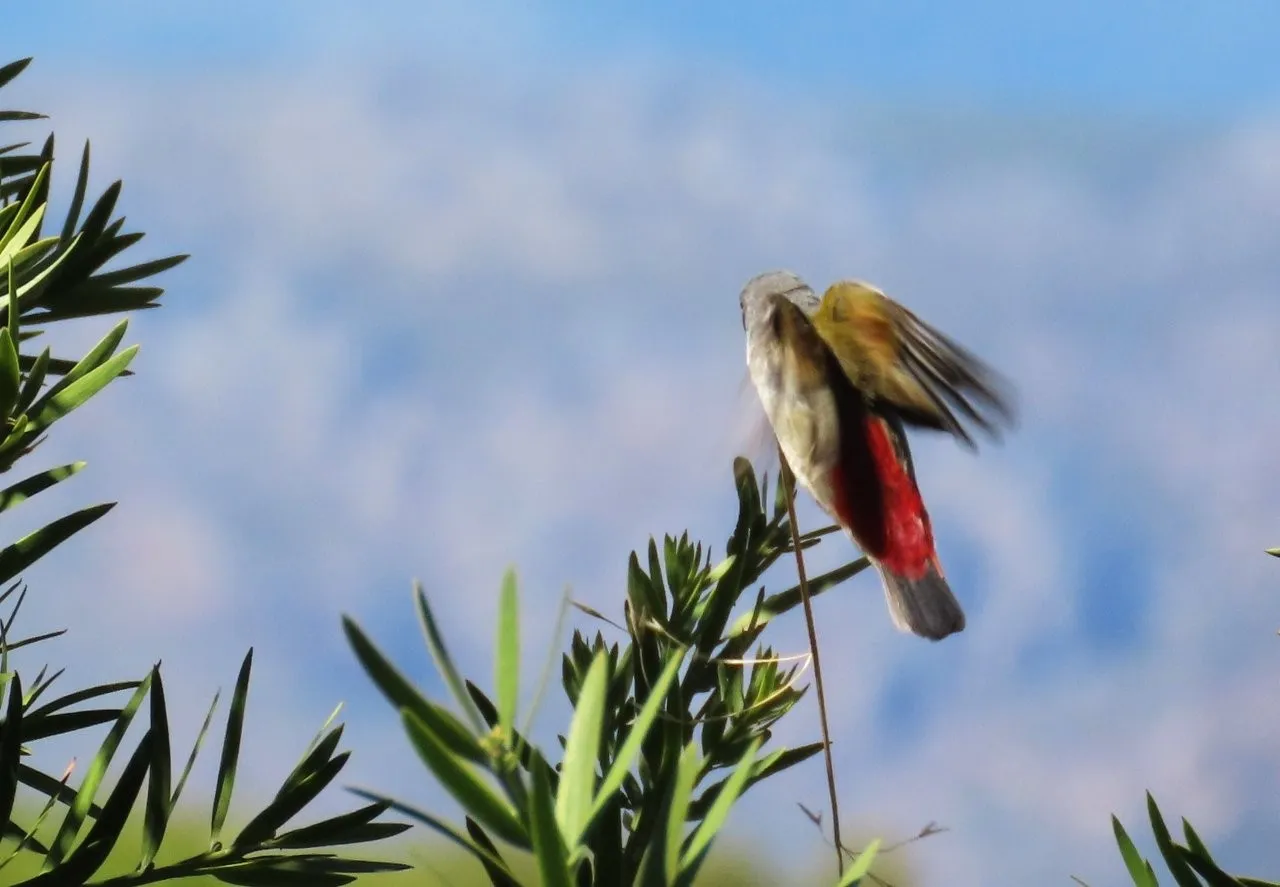
It is a small Swee Waxbill. I like to source the birds in order for the readers to find more information on each bird at the source link. And I mainly use Wikipedia, as it is the safest.
The swee waxbill (Coccopygia melanotis), is a common species of estrildid finch native to Southern Africa. The swee waxbill is 9–10 cm long with a grey head and breast, pale yellow belly, olive back and wings, red lower back and rump, and a black tail. The upper mandible is black and the lower red. The male has a black face, but the female's face is grey. Juveniles are much duller than the female and have an all-black bill.
I saw the swee picking off a thin branch of a dead shrub, and then I searched for its nesting spot.

Yep! The nest is in the shrub at the left of the picture. Never a good idea to approach the nest, as then the birdies will see that it is unsafe, and they will abandon the nest.
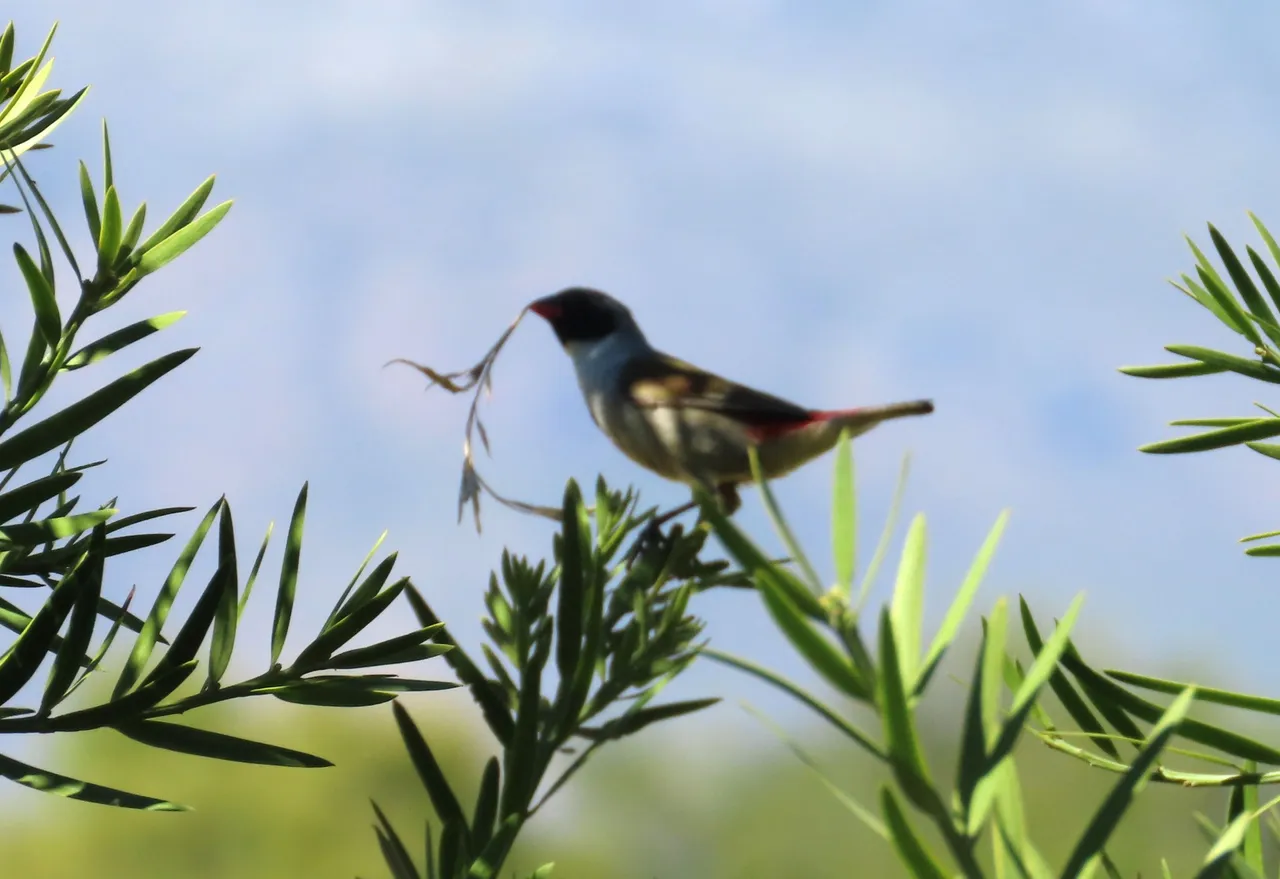
And here below we have a Cape BulBul.
The Cape bulbul (Pycnonotus capensis) is a member of the bulbul family of passerine birds. It is an endemic resident breeder in coastal bush, open forest, gardens and fynbos in western and southern South Africa. This species nests mainly in the southern spring from September to November. The nest is a thick-walled cup concealed by foliage in a small tree or shrub.
It landed on a flower shrub and decided to have a look at me.

A very inquisitive bird, that is scared of humans.

Finally, this Cape Robin-chat popped into our garden to greet me.
The Cape robin-chat (Dessonornis caffer) is a small passerine bird of the Old World flycatcher family Muscicapidae. It has a disjunct range from South Sudan to South Africa. In southern Africa, the Cape robin-chat is a common species at Afromontane forest edges, in forest scrub and ravines, fynbos, karoo, plantations, gardens and parks. Most areas with dense cover with scattered trees or song posts are however suitable. In dry areas they are restricted to thickets that fringe water courses. In southern Africa it is found from sea level up to 3,000 m where Leucosidea provides cover. It is absent from arid Karoo and Kalahari.
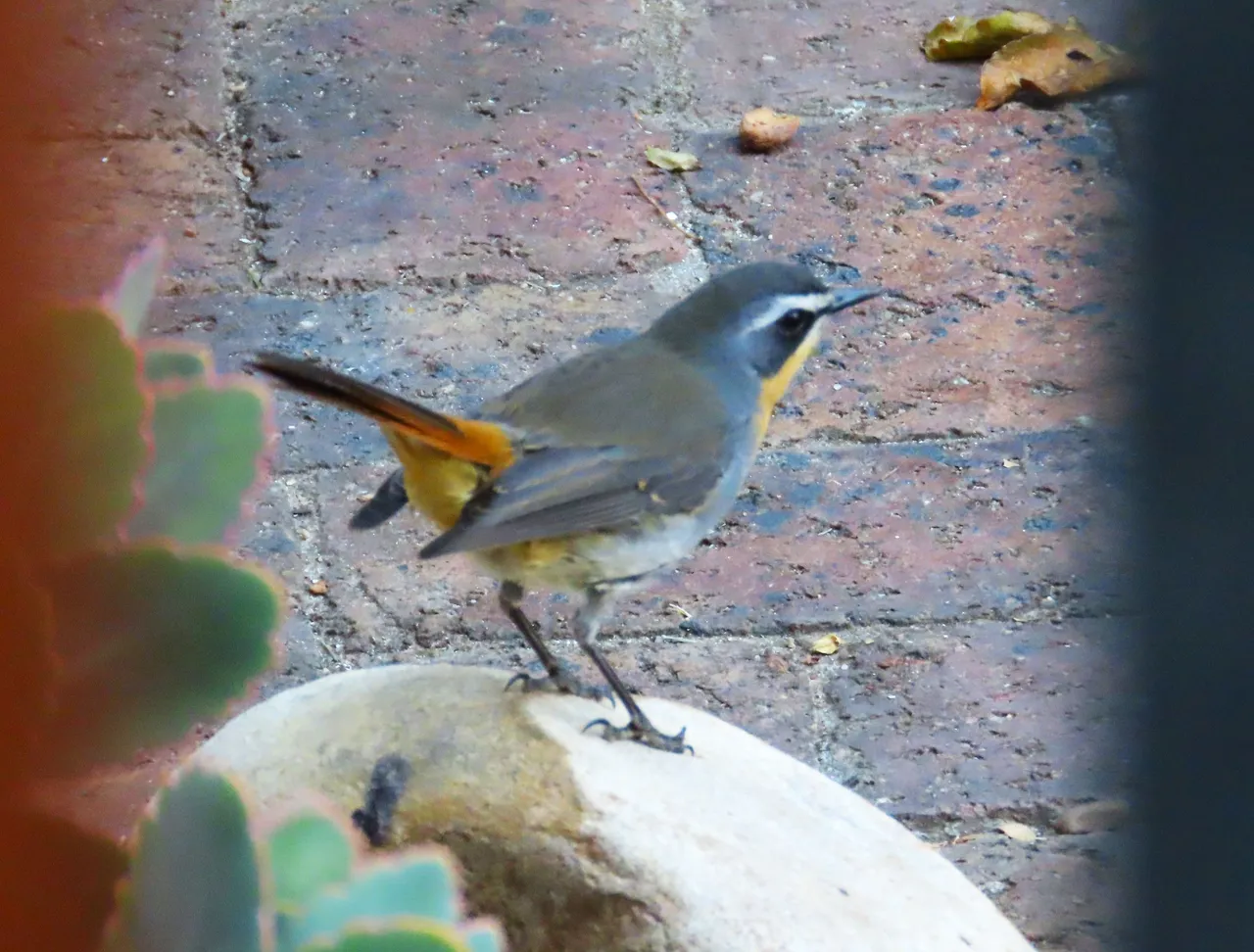
.
And now for the sad part, as the Swallowtail butterfly chrysalis perished.
We were waiting for it to convert into a transparent chrysalis, when it attached itself to the dead branch of the lemon tree.
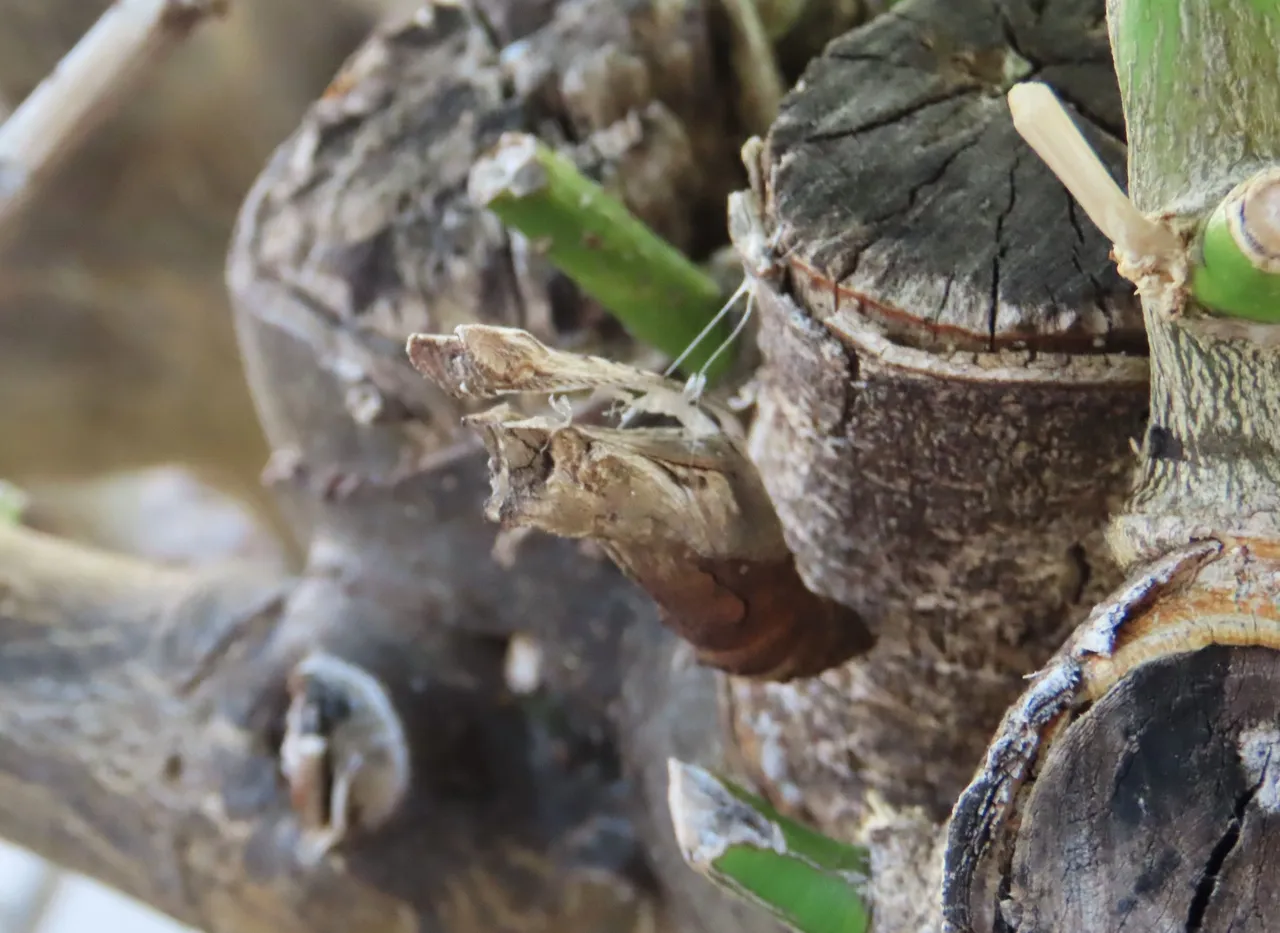
After a few days, I saw that the African sun dried the pupa.
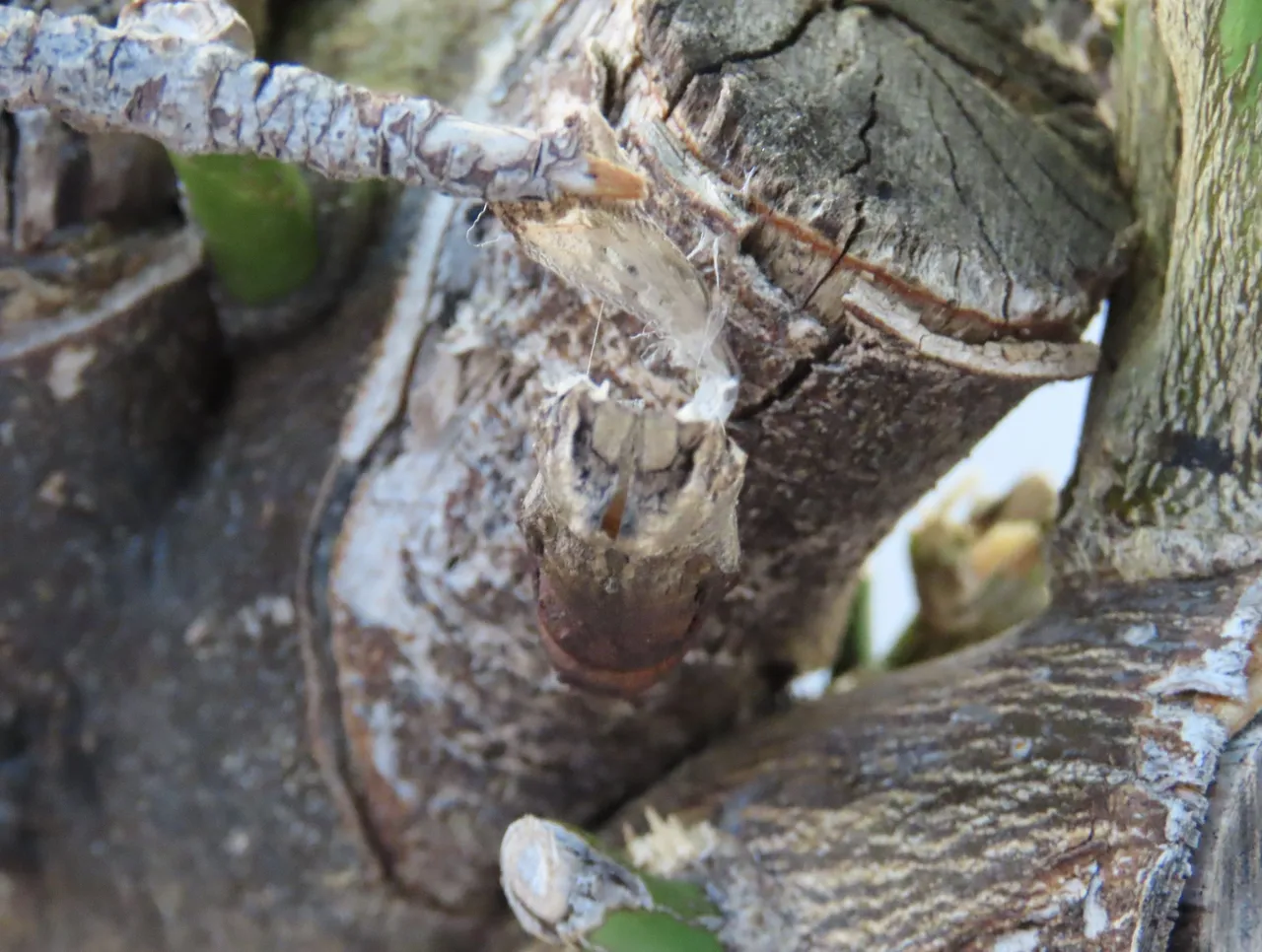
So, I took it off and you can see the empty shell of the pupa.
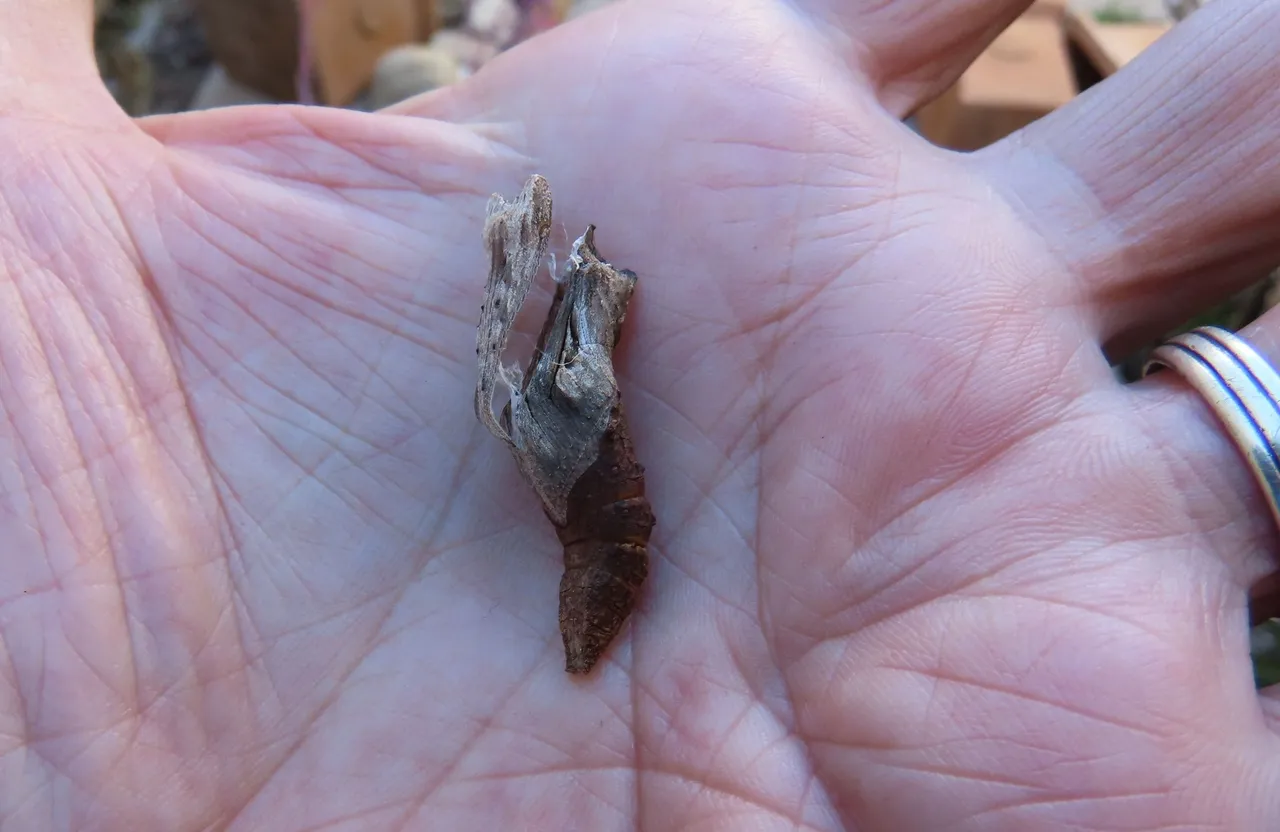
Oh yes, we were a bit sad, but we were taught a valuable lesson, as the chrysalis will never form in the heat of the sun without good natural humidity. Protection from the elements and predators is also essential. I am sure that we'll have more butterflies that lay eggs in the lemon tree, now we know how to take care of them when the pupae form.
Nature is indeed a wonderful teacher.
I hope you enjoyed the pictures and the story.
Photos by Zac Smith. All-Rights-Reserved.
Camera: Canon PowershotSX70HS Bridge camera.
Thank you kindly for supporting this post.